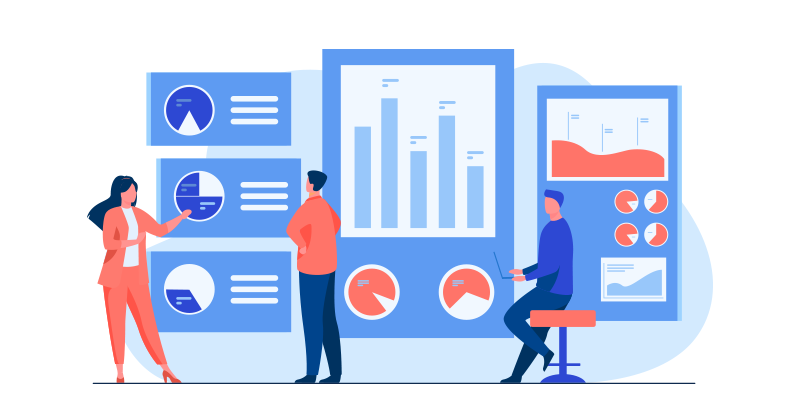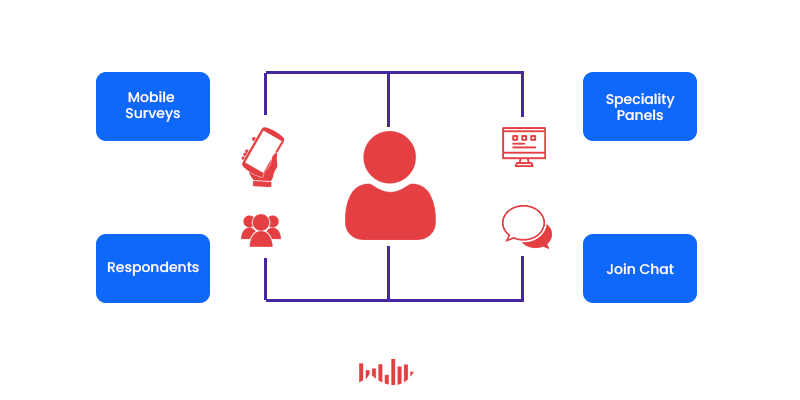What is a Consumer Research Panel, and How Can it Help?

A consumer research panel is defined as a group of individuals brought together with the express purpose of providing opinions, insight and feedback on products and services. In simple terms, a consumer research panel is the participating audience in market research campaigns.
These panels are used in a wide variety of campaigns, including those on advertisement research, product testing, and other initiatives that require the input and insight of a target audience.
Panel members are selected to represent either a particular group or the general public, with panels made up of tens (and sometimes hundreds) of thousands of people. Businesses can then segment the panels based on certain criteria and demographics to ensure they’re reaching the right audience with their questions.
Consumer Research Panels: Why Do They Matter?

Thanks to the internet and social media, sales channels are becoming increasingly saturated, with consumers bombarded by messages and offers morning, noon and night. With this in mind, businesses are now, more than ever, searching for marginal gains in order to outmaneuver the competition.
And while products and services can share price points and features, consumer research panels can help business owners understand a key intangible when it comes to standing out from the crowd: customer experience (CX).
For example, if your competitor is operating under the (false) assumption that their product or service is meeting their customers’ needs, quality consumer research can help you set your business apart and establish it as a market leader.
The goal of these panels is to actively listen to — and act upon — meaningful insights from your target audience. When you understand how your product or services makes them feel (good or bad), you can make the necessary adjustments to position your offering more effectively.
How is a Consumer Research Panel Put Together?
Consumer research panel participants are often recruited via online channels. Participants are then organized based on certain factors, such as gender, age, location, profession, and personal interests. The more information gleaned at the recruitment stage, the better, as it allows you to target an incredibly specific and targeted audience.
Usually, participation is incentivized – with panel members receiving rewards in exchange for their time and insight. Rewards can range from cash and gift cards to money-off vouchers and points, which can be redeemed against products or services.
Once a panel has been formed, research can be conducted. Questionnaires are sent to a select group of respondents designed for a particular target audience.
How Does it Differ From Other Types of Customer Research?
A consumer research panel gives you the opportunity to evolve your ideas, involving the same target group throughout for feedback on your iterations. This helps you ensure that you’re moving in the right direction as you make changes to your product, service, brand or message.
Using a panel is, therefore, in stark contrast to focus groups or other one-off surveys. These tend to be “once-and-done” endeavors, where you receive feedback in isolation, based solely on what’s put in front of the group or survey recipients at the time.
This can make actionable insights harder to come by, especially if you’re unable to reconvene the focus group or reach the same survey respondents to gauge their opinions on the changes you’ve made.
What Are the Benefits of Using an Online Consumer Research Panel?
Online consumer research panels allow you to efficiently connect with target market segments, collecting valuable feedback in the process. This method of research has the following benefits:
- Higher response rates from motivated respondents: Panel members are often highly motivated to respond as they’ve opted-in to take part in the research. This can result in a higher quality of feedback.
- Current insights from a representative audience: When maintained properly, a consumer research panel offers an up-to-date picture of your audience’s thoughts and behaviors.
- Quicker and lower cost: Consumer panels can deliver faster insights at a lower cost when compared with other research methods – especially with focus groups, which require time and expenses to run, thus taking longer to coordinate and screen respondents.
- Feedback can be implemented faster, too: The data received from online consumer panels can be analyzed quicker, with trends and patterns spotted and sorted with just a few clicks. This means that if there’s an overriding consensus that something isn’t working, you can change it quickly before it’s too late.
- Anonymity means nothing’s off-limits: The online nature of a consumer research panel means you can freely ask questions regarding sensitive information, including sexual health and activity, alcohol and drug use, relationship status, and other questions on private matters.
What Are the Drawbacks of Consumer Research Panels?
Unfortunately, online consumer panels aren’t all sunshine and rainbows. They do, in fact, have some clear and obvious drawbacks, which include:
- Small sample sizes and limited availability: Depending on your industry and target market, you may experience difficulty in finding respondents due to age, location, or lack of internet access, all of which could skew your data.
- “Bad eggs” can derail your research: There are certain types of consumer panelists who can throw your research into disarray. From bots and fake accounts to professional survey takers – who are more interested in completing your questionnaire in record time than delivering accurate insights – consumer research panels can suffer from a lack of transparency and data quality if managed poorly.
- Online survey fatigue: Chances are you won’t be the only one trying to reach your target audience with a questionnaire. Online surveys have never been more popular, but this level of popularity can lead to jaded recipients simply ignoring or deleting your invitations.
- Risk of panel dropouts: Using the same panel for months on end won’t guarantee that it’ll stay intact. Participants may drop out over time, meaning the quality and accuracy of the feedback could be affected.
- Lack of clarification or follow-ups: Other, more qualitative methods of consumer research will often involve a trained interviewer, there to prod and probe a respondent into expanding on an interesting point or observation. This is lacking from online consumer panels, making it difficult to clarify what someone meant if their feedback is vague
Examples of Consumer Research Panels in Action

As we touched on earlier, there are a number of ways in which a research panel can be used in pursuit of valuable insights and game-changing feedback. Here are a few examples:
- Product testing: Some research panels can be incentivized to provide feedback in exchange for an early look at a new product – so long as they provide an in-depth response based on their first impressions and overall experience. This is particularly useful pre-launch, allowing you to gather feedback and make improvements.
- App onboarding: Similar to product testing, you can use a research panel to test the onboarding process for an app or piece of software. This will put your interface at the fingertips of the very people you hope will use it post-launch, giving you a vital glimpse into their experience and enjoyment.
- Ad testing: Marketing companies and digital agencies can use consumer research panels to test the impact of a particular advertisement or campaign, ensuring that it makes a connection with the target audience and encourages them to take action.
An Alternative to Conventional Consumer Research Panels
Used properly — and with a reliable and vetted panel of respondents — consumer research panels can help your business gain a competitive advantage. At least, that’s the idea. Because, as more and more companies are discovering, consumer panels are on the downswing. Those drawbacks we mentioned above are becoming more prevalent, making quality feedback harder to find.
Here at Pollfish, we don’t use panels of professional survey takers. Instead, you benefit from our market research methodology by sourcing real people who are online right now. We let you survey people who are going in and out of applications, through our partnerships with publishers. It’s a randomized yet targeted survey distribution method, and you reach verified respondents who have real insights.
With over half a billion people in our network, we never have to worry about data quality. We can simply remove those bad eggs and retain only the best, most authentic, and most useful information.
Frequently asked questions
What is a consumer research panel?
A consumer research panel is a marketing term that describes bringing a group of people together with the goal of understanding their thoughts, ideas, and opinions on a product or service.
How are the members of a consumer research panel chosen?
Researchers select members of a research panel based on key characteristics of their target audience. This can include certain demographics, interests, lifestyle choices, etc.
Why are consumer research panels conducted?
Consumer research panels are conducted to help business owners gain deeper insights about their target audience. The insights revealed in a panel are different from those that can be obtained by doing research or reviewing hard data.
What is an online consumer research panel?
An online consumer research panel differs from a traditional research panel because it is conducted entirely online, rather than in-person.
What are the benefits of online consumer research panels?
Online consumer research panels can be deployed faster, can reach a larger sample size more easily, are cost-effective, and provide anonymity for respondents, which may result in more honest, in-depth feedback.
Do you want to distribute your survey? Pollfish offers you access to millions of targeted consumers to get survey responses from $0.95 per complete. Launch your survey today.

